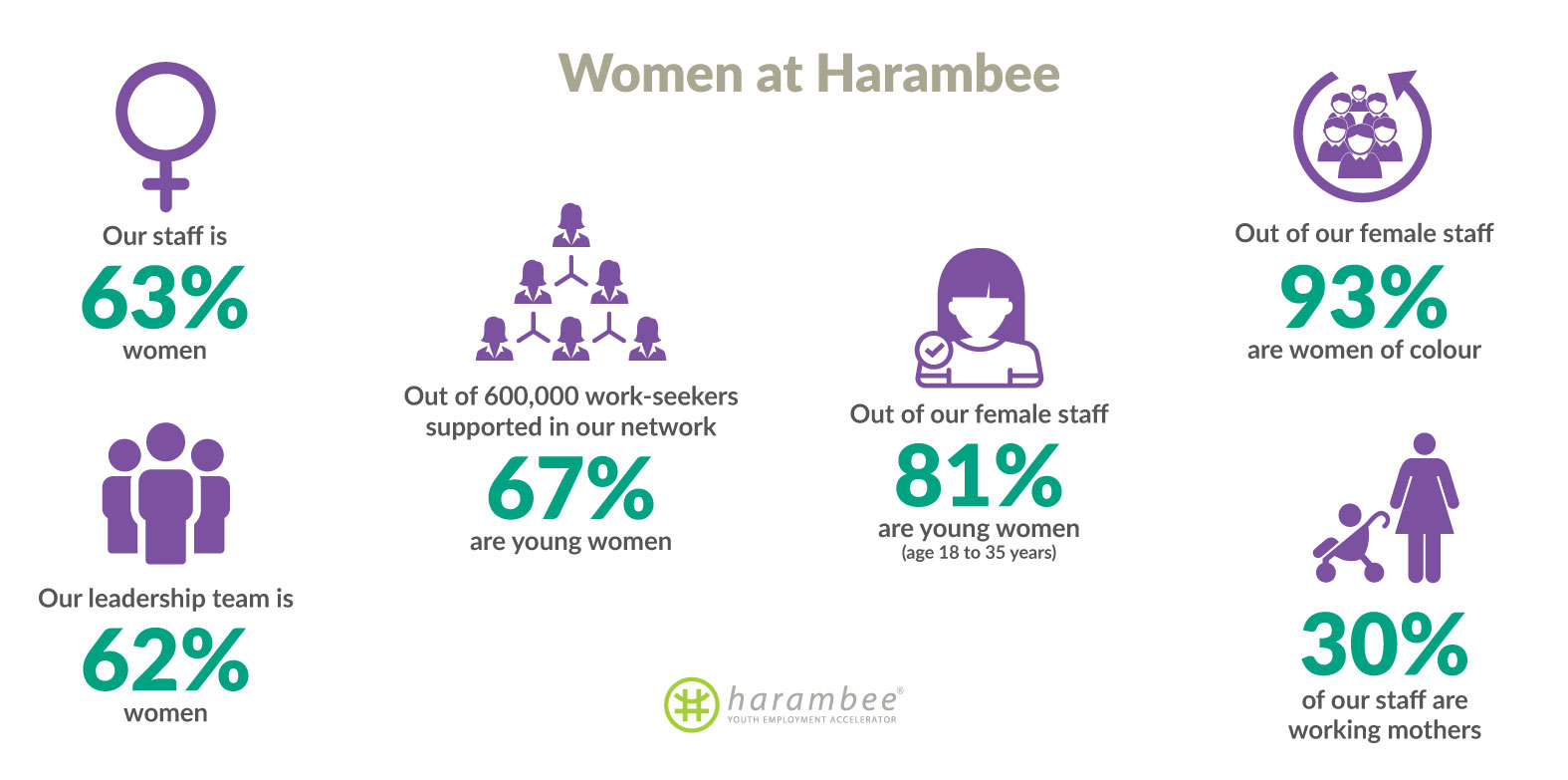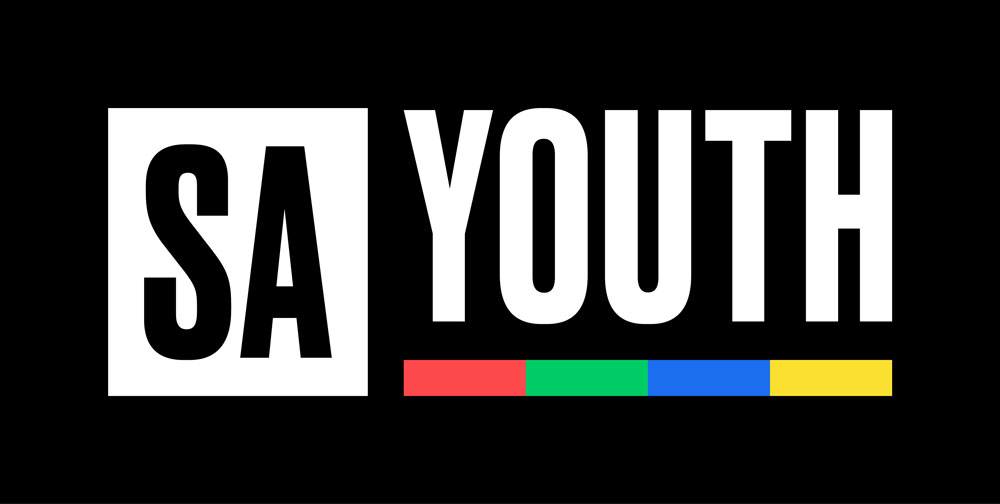

SA Youth connects young people to work and employers to a pool of entry level talent.
Are you a work-seeker?
This is Harambee’s annual analysis of the barriers facing young women in the labour market. It provides insights into how to break the barriers standing in the way of their ability to find, get and keep their first job. This study of gender marks the celebration of Women’s Month – a tribute to the historic 1956 women’s march calling for freedom and democracy in South Africa. We look at the range of barriers that exclude young women from equal participation in employment, from education levels and socio-economic circumstances to hiring practices and employer expectations.
This edition of Breaking Barriers is based on insights from Harambee’s growing network of over 600,000 young work-seekers at risk of sustained, long-term unemployment – 67% of which are women. Harambee uses research to develop insights and drive interventions that can more effectively transition young people into work and address the global challenge of youth unemployment. This research is also used for ongoing advocacy with businesses and governments to create more inclusive hiring practices and policies.
Brought to you in partnership with:
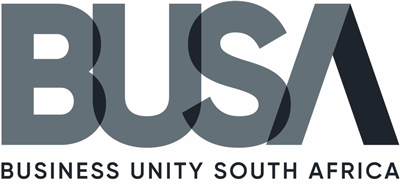

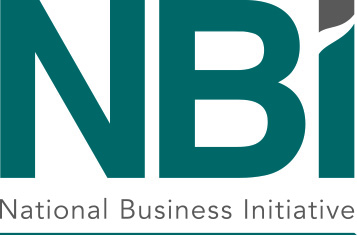
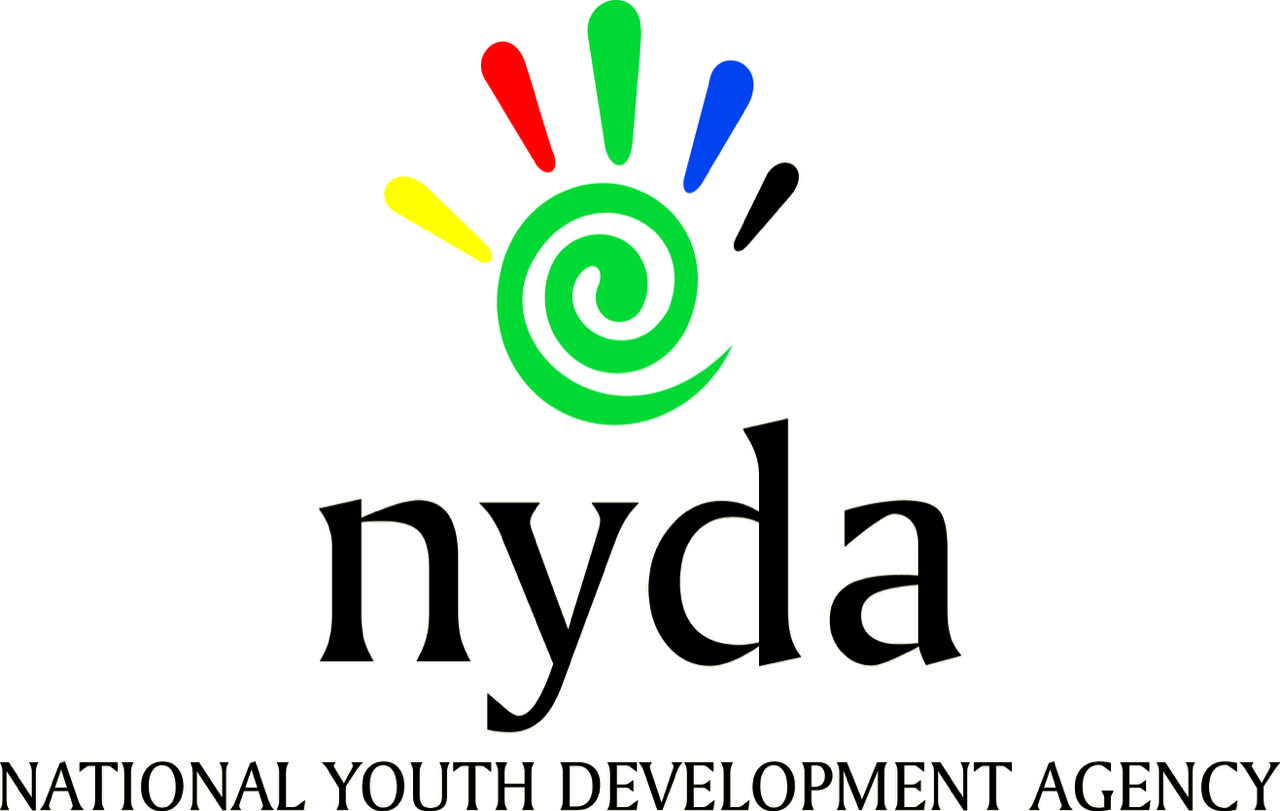
Statistics South Africa’s Quarterly Labour Force Survey’s (QLFS) employment rate for youth (18 – 34 year olds) currently stands at 48.3%. National employment rates for youth remain below 50%, which as represented on the graph are the lowest they have been in a 5-year period.
The second quarter of the year generally sees a ‘mid-year’ fall in employment rates (and a rise in unemployment rates). This corresponds to the overall lower economic activity in this quarter and is combined with a broader decrease in employment rates (see attached figure) for young people.
These declining rates of employment show that young people are losing jobs faster than they are getting jobs and that the economy is shedding formal jobs for youth. This is particularly concerning as Harambee and external research suggests that there are many social impacts on individuals as a result of long term unemployment. Harambee remains committed to engaging government, employers and work seekers in partnerships to tackle youth employment in South Africa.
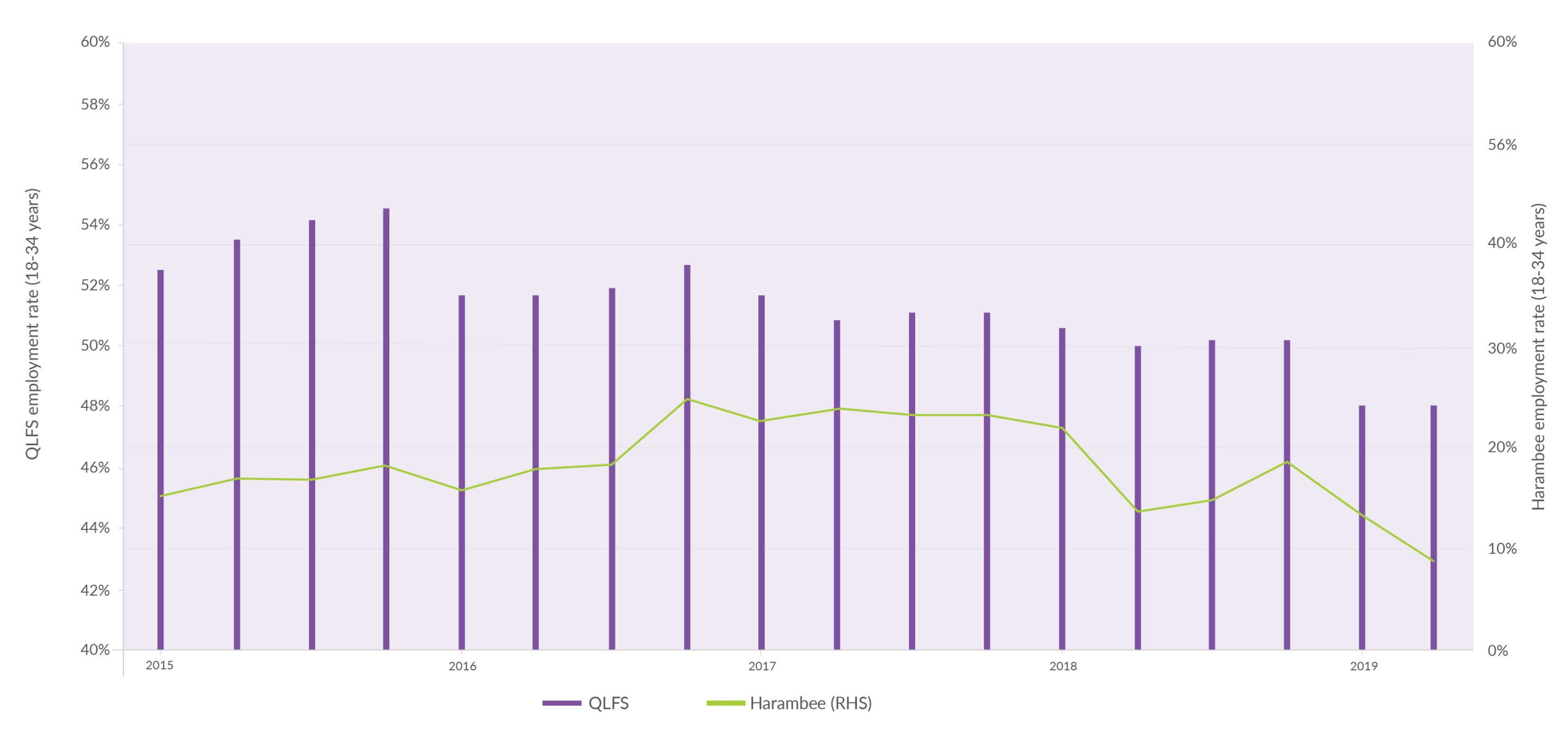
*The Harambee employment rate is measured up to 30 June 2019. Data is not drawn from Stats SA data but reflects a sample of youth who are typically living in grant dependent households.
**Youth includes all 18 – 34-year olds
***Note: Harambee’s employment rate is lower, because representatively our sample has traditionally focused on urban youth and more formal opportunities. However our model data collected is shifting to account for the high mobility of youth in and out of urban areas, as well as the changing nature of work.
INSIGHT 1
Data collected over a 3-year period consistently shows that young men are 8% more likely than young women to be employed. However, the same data set shows that once in employment, young women perform at the same level.
A range of ‘gender penalties’ described here contribute to this difference in employment rates and even earnings (young men can earn up to 10% more). These include access to social networks, gender expectations, the location of the job, transportation, and the type of work available. By working with governments, industry bodies and individual employers, Harambee provides practical support on how to improve the employment landscape for young women for greater inclusion.
Figure 1: Likelihood of Finding Employment
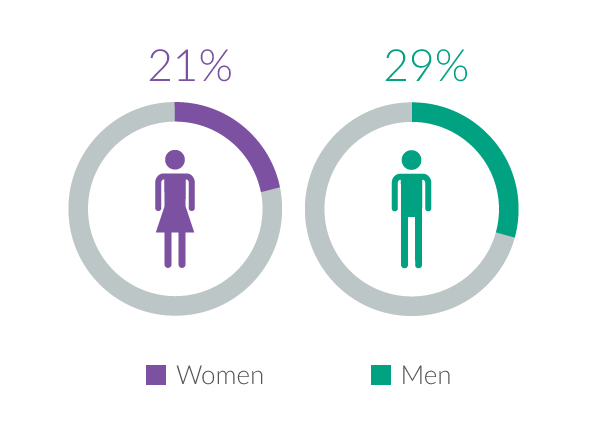
Source: Harambee Youth Employment Accelerator Employment Journey 2019
INSIGHT 2
Young women are less likely to complete secondary school, reducing their likelihood to get some entry-level jobs.
Our data also shows that young men are 1.5 times more likely than young women to have completed their matric or high school qualification. In comparing the employment outcomes for Harambee youth who have completed their secondary schooling versus those who have not, we see that those with a high school qualification are more likely to be active in the economy (see this edition of Breaking Barriers).
There are many reasons why young women are less likely to finish high school than young men: household obligations that they are expected to fulfil, family or cultural beliefs that young men should be first in the queue for education, pregnancy, and childcare. Young women nonetheless display resilience, commitment, and responsibility which are good indicators of work-readiness. Harambee’s work with over 500 businesses also shows that while valuable, a high school qualification is not the sole predictor of success of a young person’s ability to perform and succeed at work.
Figure 2: Likelihood of completing high school
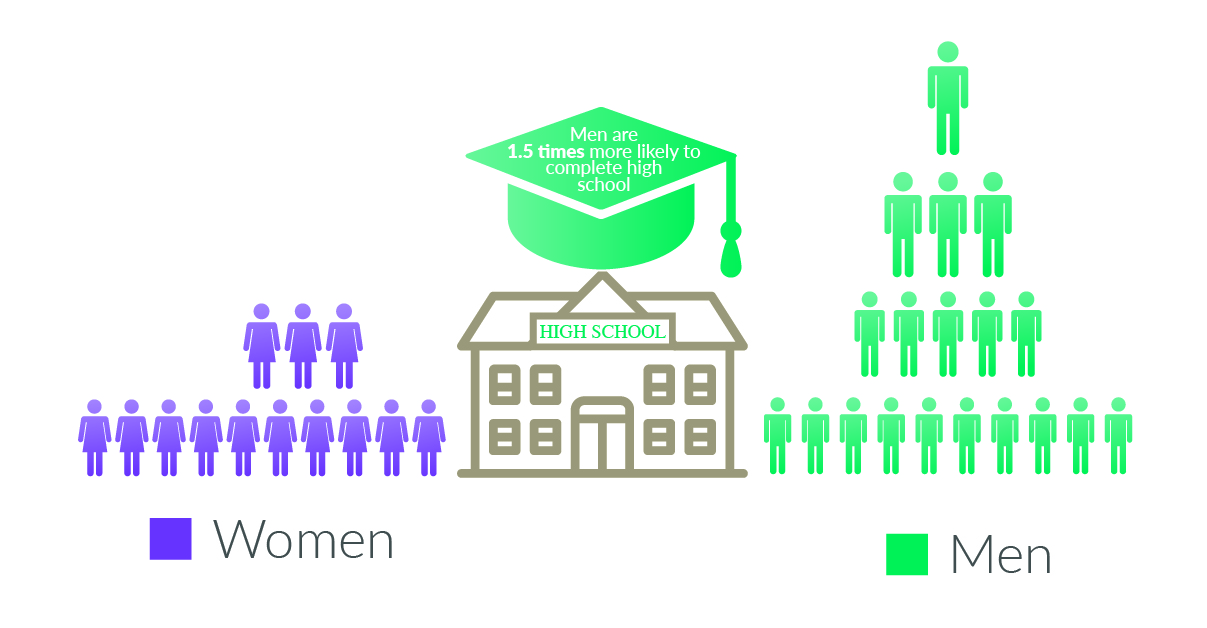
Source: Harambee Youth Employment Accelerator 2019
INSIGHT 3
Young men spend more time searching for work than women – up to 1.5 times more. Research shows that young women have less time available for job search because young women are 17 times more likely to help around the house (get children ready for school, make breakfast for the family, clean or do unpaid care work) and this affects the time they have available to search for work.
We have seen that young people increase their chances of finding employment when they are able to apply for a lot of jobs. Therefore, young women need the time to search, to apply, and to attend interviews if they are likely to be successful.
Figure 3: Young men spend more time searching for work than women, who tend to spend more time on unpaid care work
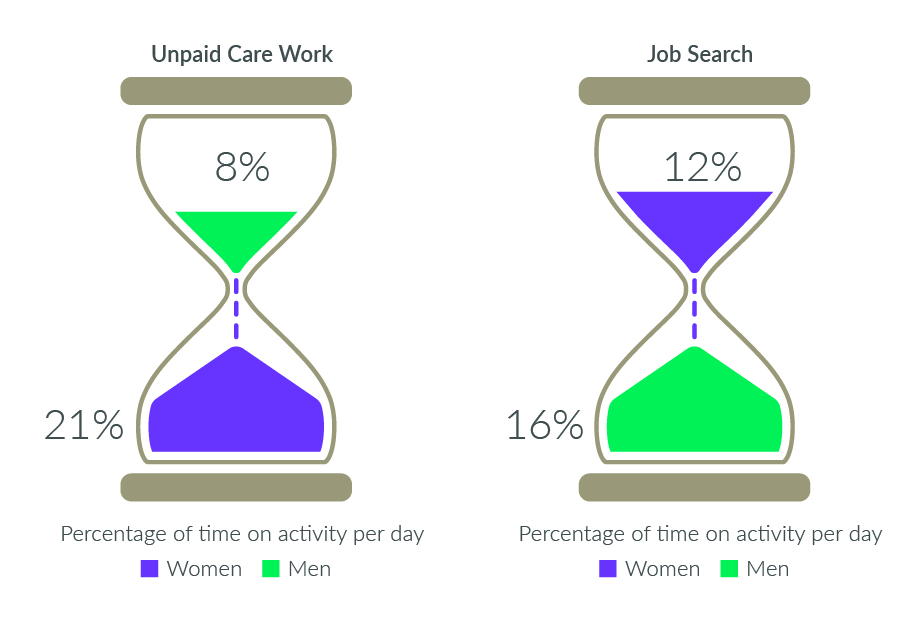
Source: Statistics South Africa Time Use Survey, 2010 and Harambee Baseline Survey
INSIGHT 4
In a recent survey of over 300,000 young people, young men were 5-6 times more likely to have a driver’s license than young women. For a growing number of entry-level jobs, having a driver’s license is a key requirement of employers and therefore excludes many young women from these job opportunities. Based on this type of research, Harambee creates partnerships and solutions to increase the number of young people who can obtain a driver’s license.
Figure 4: Likelihood of possessing a drivers license
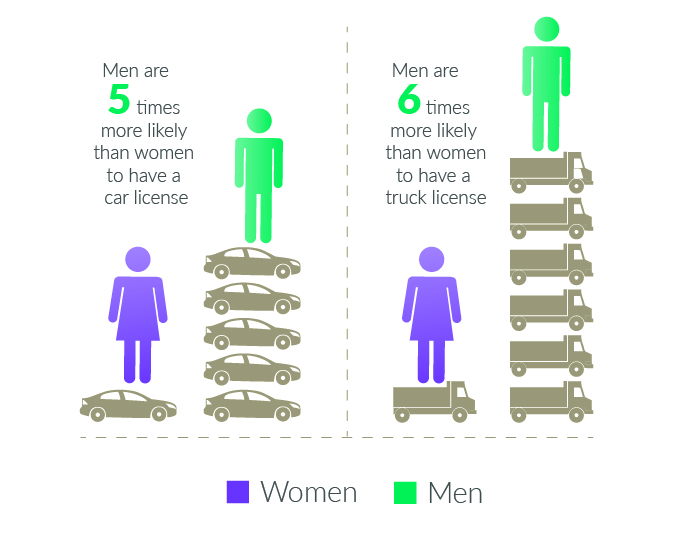
Source: Harambee Youth Employment Accelerator 2019
